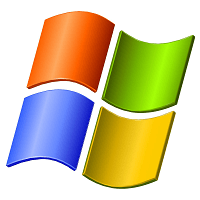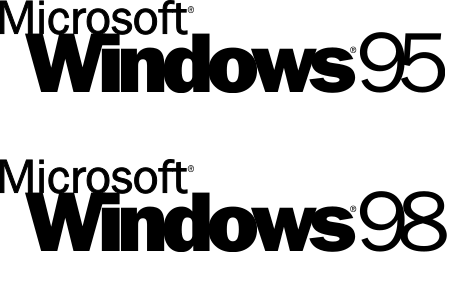Windows Tutorial

Windows is a general name for Microsoft Windows. It is developed and marketed by an American multinational company Microsoft. Microsoft Windows is a collection of several proprietary graphical operating systems that provide a simple method to store files, run the software, play games, watch videos, and connect to the Internet.
What is an Operating System?
An operating system or OS is system software. It provides an interface between computer user and computer hardware. An operating system is used to perform all the basic tasks like file management, process management, memory management, handling input and output devices, and controlling peripheral devices such as disk drives and printers.
History of Windows
Windows was first introduced by Microsoft on 20 November 1985. After that, it was gaining popularity day by day. Now, it is the most dominant desktop operating system around the world, with a market share of around 82.74%. The macOS Operating system by Apple Inc. is the second most popular with the share of 13.23%, and all varieties of Linux operating systems are collectively in third place with the market share of 1.57%.
Early History
Bill Gates is known as the founder of Windows. Microsoft was founded by Bill Gates and Paul Allen, the childhood friends on 4 April 1975 in Albuquerque, New Mexico, U.S.
The first project towards the making of Windows was Interface Manager. Microsoft was started to work on this program in 1981, and in November 1983, it was announced under the name “Windows,” but Windows 1.0 was not released until November 1985. It was the time of Apple’s Macintosh, and that’s the reason Windows 1.0 was not capable of competing with Apple’s operating system, but it achieved little popularity. Windows 1.0 was just an extension of MS-DOS (an already released Microsoft’s product), not a complete operating system. The first Microsoft Windows was a graphical user interface for MS-DOS. But, in the later 1990s, this product was evolved as a fully complete and modern operating system.
Windows Versions
The versions of Microsoft Windows are categorized as follows:
Early versions of Windows
The first version of Windows was Windows 1.0. It cannot be called a complete operating system because it was just an extension of MS-DOS, which was already developed by Microsoft. The shell of Windows 1.0 was a program named MS-DOS Executive. Windows 1.0 had introduced some components like Clock, Calculator, Calendar, Clipboard viewer, Control Panel, Notepad, Paint, Terminal, and Write, etc.
In December 1987, Microsoft released its second Windows version as Windows 2.0. It got more popularity than its previous version Windows 2.0. Windows 2.0 has some improved features in user interface and memory management.
The early versions of Windows acted as graphical shells because they ran on top of MS-DOS and used it for file system services.
Windows 3.x
The third major version of Windows was Windows 3.0. It was released in 1990 and had an improved design. Two other upgrades were released as Windows 3.1 and Windows 3.2 in 1992 and 1994, respectively. Microsoft tasted its first broad commercial success after the release of Windows 3.x and sold 2 million copies in just the first six months of release.
Windows 9x (Windows 95, Windows 98)
Windows 9x was the next release of Windows. Windows 95 was released on 24 August 1995. It was also the MS-DOS-based Windows but introduced support for native 32-bit applications. It provided increased stability over its predecessors, added plug and play hardware, preemptive multitasking, and also long file names of up to 255 characters.
It had two major versions Windows 95 and Windows 98

Windows NT (3.1/3.5/3.51/4.0/2000)
Windows NT was developed by a new development team of Microsoft to make it a secure, multi-user operating system with POSIX compatibility. It was designed with a modular, portable kernel with preemptive multitasking and support for multiple processor architectures.
Windows XP
Windows XP was the next major version of Windows NT. It was first released on 25 October 2001. It was introduced to add security and networking features.
It was the first Windows version that was marketed in two main editions: the “Home” edition and the “Professional” edition.
The “Home” edition was targeted towards consumers for personal computer use, while the “Professional” edition was targeted towards business environments and power users. It included the “Media Center” edition later, which was designed for home theater PCs and provided support for DVD playback, TV tuner cards, DVR functionality, and remote controls, etc.
Windows XP was one of the most successful versions of Windows.
Windows Vista
After Windows XP’s immense success, Windows Vista was released on 30 November 2006 for volume licensing and 30 January 2007 for consumers. It had included a lot of new features such as a redesigned shell and user interface to significant technical changes. It extended some security features also.
Windows 7
Windows 7 and its Server edition Windows Server 2008 R2 were released as RTM on 22 July 2009. Three months later, Windows 7 was released to the public. Windows 7 had introduced a large number of new features, such as a redesigned Windows shell with an updated taskbar, multi-touch support, a home networking system called HomeGroup, and many performance improvements.
Windows 7 was supposed to be the most popular version of Windows to date.
Windows 8 and 8.1
Windows 8 was released as the successor to Windows 7. It was released on 26 October, 2012. It had introduced a number of significant changes such as the introduction of a user interface based around Microsoft’s Metro design language with optimizations for touch-based devices such as tablets and all-in-one PCs. It was more convenient for touch-screen devices and laptops.
Microsoft released its newer version Windows 8.1 on 17 October 2013 and includes features such as new live tile sizes, deeper OneDrive integration, and many other revisions.
Windows 8 and Windows 8.1 were criticized for the removal of the Start menu.
Windows 10
Microsoft announced Windows 10 as the successor to Windows 8.1 on 30 September 2014. Windows 10 was released on 29 July 2015. Windows 10 is the part of the Windows NT family of operating systems.
Microsoft has not announced any newer version of Windows after Windows 10.
Prerequisite
There is nothing specific prerequisite for learning Windows.
Audience
Our Windows tutorial is designed to help beginners and professionals.
Problems
We assure that you will not find any problem in this tutorial. But if there is any mistake, please post the problem in contact form.
